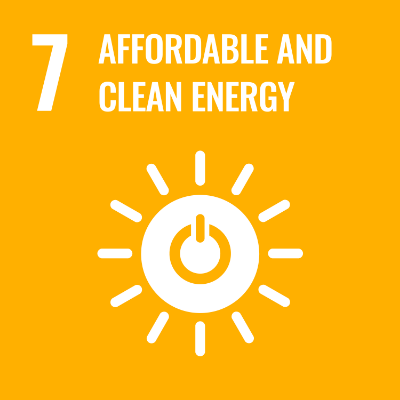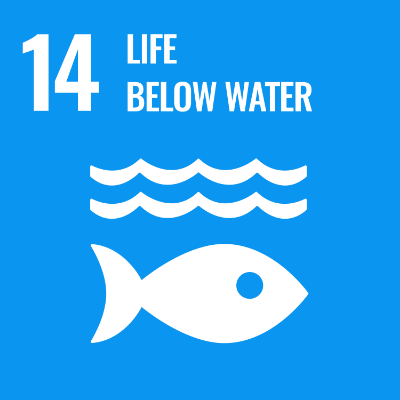Environment
Sustainability

Promotion of renewable energy businesses

The Company promotes solutions to environmental issues indirectly by guaranteeing commercial transactions related to renewable energies such as solar, biomass, and wind power.
For example, a company seeking to install solar panels may be unable to take on the manufacturer’s credit risk themselves when purchasing the panels from the manufacturer, thereby causing such company to hold off on making the purchase. In this case, the Company will underwrite the manufacturer’s credit risk, making it easier for the installing company to purchase the solar panels, in turn helping to promote the solar power generation business.
Contribution to sustainable use of marine resources

The Company contributes to the sustainable use of marine resources by guaranteeing commercial transactions related to aquaculture.
For example, a company selling feed may be unable to sell feed to an aquaculture business operator because it is unable to determine the credit risk of such operator when doing so. In such a case, the Company will underwrite the aquaculture business operator’s credit risk, enabling it to purchase the feed, thus contributing to the expansion of aquaculture.
Risks related to climate change
In response to climate change, the Company discloses information with reference to the framework recommended by the Task Force on Climate-related Financial Disclosures (TCFD). Based on the TCFD recommendations, we will continue to promote information disclosure related to climate change and strive to realize a sustainable society.
The eGuarantee Group conducted a scenario analysis based on the risks and opportunities related to climate change as exemplified by the TCFD. Multiple temperature scenarios are required, including those below 2°C, but we have selected two scenarios: the 1.5°C scenario, which has a particularly pronounced transitional impact, and the 4°C scenario, which has a stronger physical impact.
◎:Large impact ◯:Somewhat large impact △:mall impact
| Climate change risks/ opportunities | Changes in business environment | Envisioned scenarios | Risks | Opportunities | Timing of occurrence | ||
|---|---|---|---|---|---|---|---|
| Climate change 1.5 °C scenario | Transition risks/opportunities | Policies/legal regulations | Strengthening environmental regulations on GHG emissions | Needs for the Company’s services will increase due to an increase in the number of companies whose performance is deteriorating as the result of transition costs in response to requests for switching to renewable energy. | ◯ | Short/medium term | |
| Implementation of carbon tax and emissions trading | Incurrence of implementation costs for carbon tax and emissions trading | △ | Long term | ||||
| Market/technology | Sudden promotion of low-carbon and decarbonization transition | Increased capital investment to reduce power consumption. On the other hand, needs for the Company’s services will increase due to an increase in the number of companies whose performance is deteriorating due to an increase in capital investment | △ | △ | Medium/long term | ||
| Increase in financing related to decarbonization | Financing support for decarbonization by financial institutions will increase, and needs for the Company’s services for financial institutions will increase accordingly | ◯ | Medium/long term | ||||
| Evaluation | Stricter evaluation of companies that do not respond to decarbonization and generate high CO2 emissions | If clients or their business partners do not sufficiently respond to climate change, needs for the Company’s services will increase due to credit concerns caused by the occurrence of reputational risk | △ | Medium/long term | |||
| Climate change 4 °C scenario | Physical risks/opportunities | Chronic | Changes in precipitation and weather patterns (increase in average temperature) | Increased needs for the Company’s services due to credit concerns arising from a decrease in catches and aquaculture production of marine products and in agricultural and livestock harvests caused by abnormal weather and unseasonable weather | ◯ | Long term | |
| Decrease in work efficiency of employees due to increase in infectious diseases and heatstroke | △ | Medium/long term | |||||
| Acute | Intensification and increase in extreme weather events (typhoons, wildfires, floods, storms) | Increased needs for the Company’s services due to destabilization of the supply chain caused by extensive damage to clients or their business partners | ◯ | Long term | |||
| Increased needs for the Company’s services due to economic disruption caused by natural disasters | ◯ | Long term | |||||
| Increased needs for the Company’s services due to an increase in the number of bankruptcies and companies whose performance has deteriorated due to the impact of natural disasters | △ | Medium/long term | |||||
GHG emissions by the Company in fiscal 2023 were 113 tons (indirect emissions from power consumption).
We have also set a net zero target in fiscal 2030 for Scope 2 GHG emissions. When working to reduce GHG emissions, we will strive to conserve energy and electricity within the Company, and aim to realize a decarbonized society that utilizes renewable energy without using fossil fuels.
| Fiscal Year | CO2 emissions (tons) |
|---|---|
| Fiscal 2023 | 113 |
| Fiscal 2030 | Net Zero |
Tabulation period was fiscal 2021
Calculated using power consumption and FY2019 nationwide average coefficient for the head office alone and each sales office